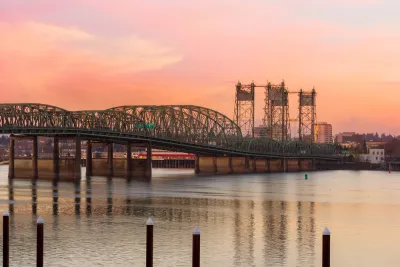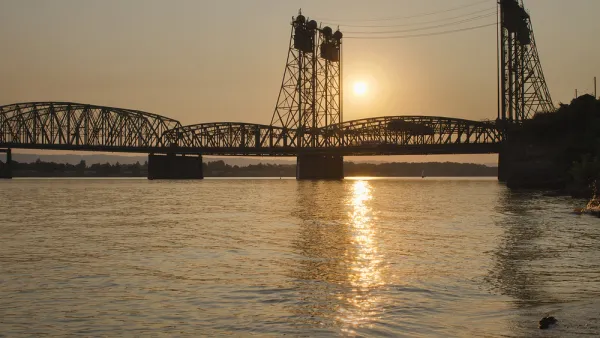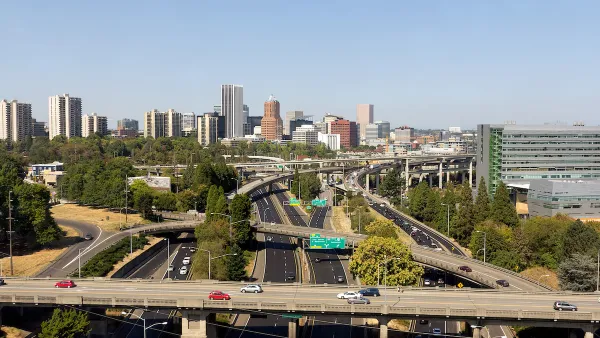2021 will be a big year for planning on the Interstate Bridge Replacement project, née Columbia River Crossing, that will connect Washington and Oregon across the Columbia River.

Officials from the states of Washington and Oregon are dusting off ambitions to replace an Interstate 5 bridge across the Columbia River. A previous version of the plan, known as the Columbia River Crossing, was killed in 2014, but not before both states spent $190 million over a decade of work on the project.
Planetizen has used the "back from the dead" hook in the headline for this article on more than once occasion regarding this project, first as officials began to re-examine and re-advocate for the project in early 2017. Oregon took a substantive step toward rejuvenating the project in August 2019. The project was on the fast track by September 2019.
The story in 2020 is told by Ryan Packer, who first details the rare collection of opposition forces that killed the project in 2015 and lists the key features of the Columbia River Crossing project of the previous decade, which would have spent $3.4 billion to increase the freeway's capacity from six to ten lanes and add seven "optimized" interchanges on either side of the river.
The project now has a new name, the Interstate Bridge Replacement (IBR) program, but it's cost estimates are still based on the old project, reports Packer, so there are still numerous questions about whether the project will expand the freeway, where, and by how much. Packer's deep reporting offers insight from leading officials about which way the project might be headed in this new iteration.
Packer notes that the question of whether the states will have to pay $140 million back to the federal government is motivating some of the action on the project, positioning 2021 as a key year for observers to monitor the project.
FULL STORY: Columbia River Crossing Freeway Project Is Back

Analysis: Cybertruck Fatality Rate Far Exceeds That of Ford Pinto
The Tesla Cybertruck was recalled seven times last year.

National Parks Layoffs Will Cause Communities to Lose Billions
Thousands of essential park workers were laid off this week, just before the busy spring break season.

Retro-silient?: America’s First “Eco-burb,” The Woodlands Turns 50
A master-planned community north of Houston offers lessons on green infrastructure and resilient design, but falls short of its founder’s lofty affordability and walkability goals.

Test News Post 1
This is a summary

Analysis: Cybertruck Fatality Rate Far Exceeds That of Ford Pinto
The Tesla Cybertruck was recalled seven times last year.

Test News Headline 46
Test for the image on the front page.
Urban Design for Planners 1: Software Tools
This six-course series explores essential urban design concepts using open source software and equips planners with the tools they need to participate fully in the urban design process.
Planning for Universal Design
Learn the tools for implementing Universal Design in planning regulations.
EMC Planning Group, Inc.
Planetizen
Planetizen
Mpact (formerly Rail~Volution)
Great Falls Development Authority, Inc.
HUDs Office of Policy Development and Research
NYU Wagner Graduate School of Public Service




























